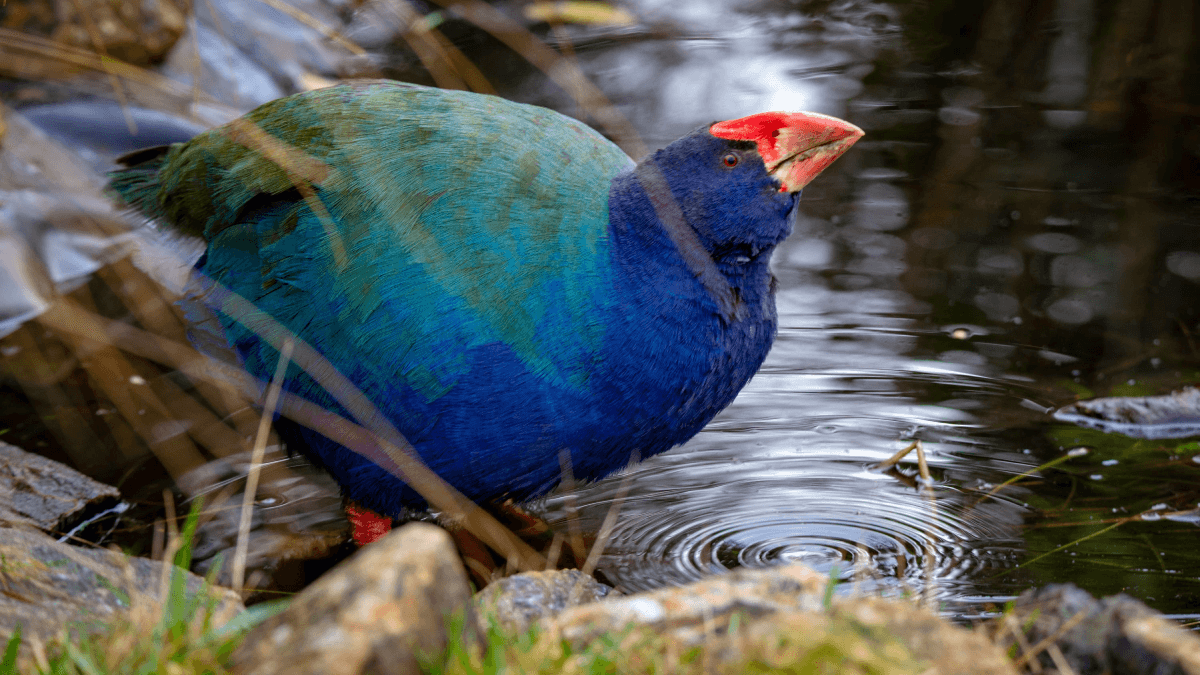The world’s conservationists received a rare nugget of good news when a lost species of rodent was found alive and well in the deserts of Djibouti, East Africa. The elephant shrew is biologically neither elephant nor shrew, deriving its name from its distinctive trunk-like nose. It was last seen in Somalia in the 1970s.
This makes the elephant shrew a ‘Lazarus Taxon’, an official, if rather lofty phrase denoting an apparently extinct species that miraculously reappears.
It’s not the first, and hopefully it won’t be the last. Here are a few other creatures that managed to re-emerge, long after their autopsies.
1. Coelacanth

It’s hard for scientists to know exactly when to declare a species extinct. Maybe five years pass, maybe 10, maybe 50, without any sightings. But after 66 million, you’d figure it’s a safe bet.
It’s probably the most famous comeback story in the animal kingdom. The coelacanth was thought to have snuffed it with the dinosaurs before one was netted off the coast of South Africa in 1938.
Coelacanths, nocturnal deep-sea dwellers that look just as prehistoric as they are, are thought to frequent underwater caves in the Indian Ocean, and remain critically endangered.
Read: Six completely harmless-looking animals that are deadly
2. Lord Howe stick insect
When you think ‘stick insect’, you probably picture a small, well-camouflaged bug ambling awkwardly around a glass case. But a ‘stick’ can be anything from a twig to a log, and these insects from Lord Howe Island are like something from The Land Before Time.
Nicknamed ‘tree lobsters’, you might think they’d be hard to miss, but the critters spent more than eight decades on the extinct list after a supply ship brought rats to their island in 1918. Their ‘extinction’ ended in 2001, when two scientists found a colony on a nearby islet, made up of a minuscule 24 individuals.
Thousands of the insects have now been bred in captivity, with a view to repopulating Lord Howe Island.
3. Takahe

Flightless birds don’t tend to have a happy relationship with extinction, but for every dodo and moa, there is a takahe. A relic of the ‘rail’ family, a broad genetic church that includes coots and crakes, the multi-coloured takahe once roamed most of modern-day New Zealand.
The species was pronounced dead in 1898, decimated by predation, hunting and habitat loss, but one resilient colony was dramatically discovered high in the Murchison Mountains a full 50 years later.
A conservation success story, the takahe became the subject of New Zealand’s longest-running endangered species program, and has now spread to seven islands and several mainland locations.
Read: Weird and wonderful animals from around the world
4. Pygmy tarsier
This saucer-eyed primate was thought to have kicked the bucket in the 1920s, but rumours of its demise were greatly exaggerated. As is often the case, the rediscovery rested on a corpse – found by Indonesian scientists in a rat trap in 2000 – though it was another eight years before researchers observed live pygmy tarsiers high in the mountains of Sulawesi, Indonesia.
Tarsiers, extremely sensitive creatures commonly compared to Furbies, Yoda, and the gremlins from Gremlins, famously have been known to respond to distress in captivity by attempting suicide, banging their heads against the bars of their cages.
Small, nocturnal and insectivorous, there is still much we do not know about these mysterious creatures, and two brand new species of tarsier were discovered in Sulawesi in 2017.
5. Omura’s whale
Probably the largest animal to ever convince conservationists it had collectively croaked, the Omura’s whale resembles the much more common Bryde’s whale, and is actually very small for a cetacean. It was named in 2003 entirely from dead specimens, and with no live sightings was presumed extinct, until in 2013 DNA evidence confirmed a small population off the coast of Madagascar.
Extremely elegant swimmers with streamlined bodies and a low, lyrical song, the Omura’s whale is rare among baleen whales in that it does not migrate, but feeds, breeds, and is studied by conservationists all in one corner of the Indian Ocean.
6. Caspian horse
Even-tempered steeds ideal for first-time riders, the rediscovery of the Caspian horse is a storybook narrative to put Black Beauty to shame. In 1957, Virginia-born American horse-breeder Louise Laylin jetted off to Iran to marry a Persian prince, and set up a children’s riding school in Tehran.
Read: Study says watching cute animal videos might be good for you
Finding the local horses too skittish and boisterous, she set off for the remote Caspian mountains in search of the semi-mythical, thought-to-be-extinct Caspian horse. She promptly found three, and galloped back to the capital.
Caspian horses now enjoy worldwide domestic distribution, and sustainable populations in Australia, the UK, and the US.
What animal would you most like to see in the wild? Is there an extinct creature you wish would come back? Let us know in the comments section below.
– With PA

